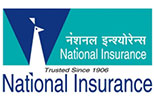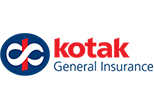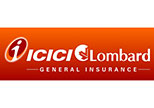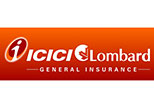What is the Difference Between Life Insurance and Health Insurance?
Understanding the nitty-gritty of different insurance products is crucial if you are planning your finances. Life insurance and health insurance are two fundamental types of insurance, each serving distinct purposes in financial planning. While they both offer protection, their coverage, benefits, and objectives differ significantly. This guide aims to elucidate the differences between life insurance and health insurance, helping you make informed decisions based on their specific needs and life stages.

Table of Contents
- What is a Life Insurance Policy?
- Types of Life Insurance Policies
- What is a Health Insurance Policy?
- Types of Health Insurance Policies
- Life Insurance vs Health Insurance
- How Does A Life Insurance Policy Work?
- Benefits of Having a Life Insurance Plan
- How Does A Health Insurance Plan Work?
- Benefits of Having a Health Insurance Policy
- 1. Coverage of Medical Expenses
- 2. Cashless Hospitalisation
- 3. Protection Against Rising Healthcare Costs
- 4. Access to Quality Healthcare
- 5. Pre and Post Hospitalisation Coverage
- 6. Tax Benefits
- 7. Added Wellness Benefits
- 8. Coverage for All Family Members
- 9. Peace of Mind
- 10. Critical Illness Coverage
- 11. No Claim Bonus
- Which Insurance Should One Buy?
- FAQs
What is a Life Insurance Policy?
A life insurance policy is a contract between an individual and an insurance company, where the insurer promises to pay a designated beneficiary a sum of money upon the death of the insured person. Besides the death benefit, some life insurance policies also offer savings and investment features, providing financial support to the policyholder and their family in various ways.
Key Aspects of Life Insurance:
1. Purpose: The primary purpose of life insurance is to provide financial security to the beneficiaries of the policyholder in the event of their untimely death.
2. Types of Life Insurance: Includes term life insurance, whole life insurance, endowment plans, money-back policies, and unit-linked insurance plans (ULIPs).
3. Term Life Insurance: Offers pure life cover with no savings component, paying a death benefit if the policyholder dies within the policy term.
4. Investment Component: Certain life insurance policies like ULIPs and endowment plans combine life cover with investment, enabling policyholders to grow their savings while securing life cover.
5. Premiums: Policyholders pay regular premiums, which vary based on the type of policy, coverage amount, term, and the policyholder's age and health.
6. Tax Benefits: Premiums paid for life insurance are eligible for tax deductions under Section 80C of the Income Tax Act in India.
Life insurance is a cornerstone of financial planning, offering peace of mind that your loved ones will be financially taken care of in your absence. It's a long-term commitment that also serves as a financial safety net, ensuring that your family's financial goals are not derailed in case of any unforeseen events. In the following sections, we will explore what health insurance entails and how it differs from life insurance.
Types of Life Insurance Policies
Life insurance policies come in various forms, each designed to suit different financial needs and life stages. Let's delve into three primary types of life insurance policies: Term Life Insurance, Whole Life Insurance, and Endowment Policy.
1) Term Life Insurance
Term Life Insurance is the simplest and most straightforward form of life insurance. It provides coverage for a specific term or period.
Key Features:
- Pure Life Cover: Offers only death benefit without any savings or investment component.
- Fixed Term: Coverage is provided for a set period, like 10, 20, or 30 years.
- Affordable Premiums: Generally has lower premiums compared to other life insurance types due to the absence of a savings component.
- Beneficiary Payout: If the policyholder dies within the term, the nominee receives the sum assured.
- No Maturity Benefit: There is no payout if the policyholder survives the term.
2) Whole Life Insurance
Whole Life Insurance covers the policyholder for their entire life, unlike term insurance, which is limited to a specific period.
Key Features:
- Lifetime Coverage: The policy remains active until the death of the policyholder, as long as premiums are paid.
- Savings Component: Often includes a savings element, allowing the policy to accumulate cash value over time.
- Higher Premiums: Premiums are typically higher than term life insurance due to the lifelong coverage and savings element.
- Death Benefit and Cash Value: Beneficiaries receive the death benefit, and the policyholder can access the cash value during their lifetime under certain conditions.
3) Endowment Policy
An Endowment Policy is a life insurance contract designed to pay a lump sum after a specified term or on the policyholder's death.
Key Features:
- Life Cover with Savings: Combines life insurance coverage with a savings plan.
- Maturity Benefit: Provides a lump sum amount to the policyholder if they survive the policy term.
- Death Benefit: In case of the untimely death of the policyholder, the nominee receives the sum assured.
- Investment Component: Part of the premium goes towards life cover, while the rest is invested by the insurer.
- Fixed Term: The policy has a fixed duration, after which the maturity benefit is paid.
|
Type of Policy |
Definition |
Key Features |
Pro Tips |
|
1) Term Life Insurance |
Provides coverage for a specific term or period. |
- Pure Life Cover: Only death benefit, no savings/investment. - Fixed Term: Coverage for a set period. - Affordable Premiums: Lower due to no savings component. - Beneficiary Payout: Sum assured paid if the policyholder dies within the term. - No Maturity Benefit: No payout if the policyholder survives the term. |
- Ideal for those seeking affordable coverage. - Consider increasing coverage with major life events (e.g., marriage, children). |
|
2) Whole Life Insurance |
Covers the policyholder for their entire life. |
- Lifetime Coverage: Active until the policyholder's death with premium payments. - Savings Component: Accumulates cash value. - Higher Premiums: Due to lifelong coverage and savings. - Death Benefit and Cash Value: Beneficiaries receive death benefit; cash value accessible under conditions. |
- Suitable for long-term financial planning. - Review the policy periodically to ensure it meets evolving financial goals. |
|
3) Endowment Policy |
A life insurance contract designed to pay a lump sum after a specified term or on death. |
- Life Cover with Savings: Life insurance combined with savings. - Maturity Benefit: Lump sum paid if policyholder survives the term. - Death Benefit: Nominee receives sum assured if policyholder dies. - Investment Component: Premiums partly used for life cover and investment. - Fixed Term: Duration after which maturity benefit is paid. |
- Consider for a combination of savings and insurance needs. - Evaluate the return on investment component. |
Each of these life insurance types serves different financial goals. Term life insurance is suitable for those seeking affordable, straightforward protection. Whole life insurance is ideal for those looking for lifelong coverage and a way to accumulate savings. Endowment policies are a good choice for individuals who want to combine savings with insurance coverage, offering both a death benefit and a maturity benefit. Choosing the right type depends on your individual financial needs, life goals, and investment appetite.
What is a Health Insurance Policy?
A health insurance policy is a type of insurance coverage that pays for medical and surgical expenses incurred by the insured. It acts as a financial safety net for individuals and families against unexpected healthcare costs due to illness or injury. Health insurance can reimburse the insured for expenses incurred from illness or injury, or pay the care provider directly.
Key Aspects of Health Insurance:
- Coverage: Health insurance plans typically cover expenses such as hospitalisation, surgeries, laboratory tests, medications, doctor visits, and sometimes even dental and vision care.
- Types of Health Insurance: Includes individual health insurance, family floater plans, senior citizen health insurance, critical illness insurance, and group health insurance for corporate employees.
- Cashless Facility: Many health insurance policies offer a cashless treatment facility, where the insurance company directly settles the bills with the hospital, eliminating the need for upfront payment by the insured.
- Premiums: The policyholder pays regular premiums to the insurance company. These premiums vary based on the coverage amount, type of plan, age of the insured, and other factors like pre-existing conditions.
- Policy Term: Health insurance plans are generally annual contracts, which need to be renewed each year.
- Additional Benefits: Some plans offer additional benefits like health check-ups, wellness programs, alternative treatment coverage, and more.
- Tax Benefits: Premiums paid for health insurance are eligible for tax deductions under Section 80D of the Income Tax Act in India.
Health insurance is essential in today’s world, where medical expenses are steadily rising. It not only provides financial security in the event of health issues but also ensures access to quality healthcare services. Whether for an individual or a family, health insurance is an indispensable part of financial planning, safeguarding against high medical costs and promoting overall well-being.
Types of Health Insurance Policies
Health insurance policies in India are diverse, catering to different demographic groups and health needs. Understanding the various types of health insurance policies can help individuals and families choose the most suitable coverage. Let's explore five key types of health insurance policies:
1) Individual Health Insurance Plan
This type of policy provides health coverage to a single individual.
Key Features:
- Personalised Coverage: Tailored to the individual's health needs and risk factors.
- Sum Insured: The sum insured is exclusively utilised by the policyholder.
- Premium: Based on the individual’s age, health condition, and medical history.
- Benefits: Typically covers hospitalisation, pre and post-hospitalization expenses, surgeries, and sometimes day-care procedures.
2) Group/Employee Health Insurance Plan
Offered by employers to their employees, covering a group of people under one policy.
Key Features:
- Employer-Sponsored: Premiums are usually paid by the employer.
- Coverage: Includes basic health coverage, and may sometimes extend to family members.
- No Medical Check-ups: Often does not require individual medical check-ups for coverage.
- Portability: Coverage ends when the individual leaves the organisation.
3) Senior Citizens’ Health Insurance Plan
Specially designed for individuals aged 60 years and above.
Key Features:
- Age-Specific Coverage: Tailored to cater to the health needs of senior citizens.
- Higher Premium: Due to the higher risk associated with age.
- Inclusions: Covers age-related illnesses, hospitalisation, and may offer additional benefits like regular health check-ups.
4) Family Floater Plan
A single policy that covers the entire family under one sum insured.
Key Features:
- Family Coverage: Includes spouse, children, and sometimes parents under one policy.
- Shared Sum Insured: The total sum insured can be used by any family member.
- Cost-Effective: Generally more economical than buying individual policies for each family member.
- Flexibility: Allows addition of new family members, like a newborn child.
5) Critical Illness Plan
Provides coverage for specific life-threatening illnesses.
Key Features:
- Lump Sum Payout: Offers a lump sum amount on the diagnosis of a covered critical illness.
- Specific Illnesses Covered: Typically covers illnesses like cancer, heart attack, stroke, kidney failure, etc.
- Supplemental Coverage: Often bought in addition to a standard health insurance policy.
|
Type of Plan |
Definition |
Key Features |
|
1) Individual Health Insurance Plan |
Health coverage for a single individual. |
- Personalized Coverage: Tailored to individual health needs and risks. - Sum Insured: Exclusively for the policyholder. - Premium: Based on age, health, medical history. - Benefits: Hospitalisation, surgeries, day-care procedures. |
|
2) Group/Employee Health Insurance Plan |
Offered by employers, covering a group of people under one policy. |
- Employer-Sponsored: Premiums usually paid by the employer. - Coverage: Basic health coverage, may include family. - No Medical Check-ups: Often not required. - Portability: Ends with leaving the organisation. |
|
3) Senior Citizens’ Health Insurance Plan |
For individuals aged 60 years and above. |
- Age-Specific Coverage: For senior citizens' health needs. - Higher Premium: Reflects higher age-related risk. - Inclusions: Age-related illnesses, hospitalisation, health check-ups. |
|
4) Family Floater Plan |
A single policy covering the entire family under one sum insured. |
- Family Coverage: Spouses, children, and sometimes parents. - Shared Sum Insured: Any family member can use it. - Cost-Effective: More economical than individual policies. - Flexibility: Allows adding new family members. |
|
5) Critical Illness Plan |
Coverage for specific life-threatening illnesses. |
- Lump Sum Payout: On diagnosis of a covered critical illness. - Specific Illnesses Covered: Cancer, heart attack, etc. - Supplemental Coverage: Often an addition to standard health insurance. |
Each type of health insurance policy serves a specific purpose and audience. Individual Health Insurance Plans are suitable for single individuals looking for personalised coverage, while Group/Employee Health Insurance Plans are beneficial for employees as part of their employment benefits. Senior Citizens' Health Insurance Plans cater to the unique health needs of the elderly, Family Floater Plans offer a cost-effective solution for family health coverage, and Critical Illness Plans provide a safety net against severe health conditions. The choice of policy should be based on individual or family health needs, life stage, and financial capacity.
Life Insurance vs Health Insurance
Understanding the differences between life insurance and health insurance is crucial as they serve distinct purposes in financial planning. Let’s quickly compare health insurance and life insurance for more clarity:
|
Aspect |
Life Insurance |
Health Insurance |
|
Primary Purpose |
Provides financial security to beneficiaries upon the death of the insured or after a set period. |
Covers medical expenses incurred due to illness or injury. |
|
Coverage Type |
Primarily covers the risk of death. Some policies may offer savings and investment options. |
Covers hospitalisation costs, medical bills, and sometimes daycare procedures, OPD expenses, etc. |
|
Benefit Payout |
Pays a death benefit to nominees or a maturity benefit to the policyholder, depending on the policy type. |
Pays for or reimburses medical expenses as per the policy terms. |
|
Policy Term |
Can be for a specific term (term life) or for the entire life of the insured (whole life). |
Generally annual contracts, renewable each year. |
|
Premium Payment |
Premiums paid over the policy term, which may be for a limited period or throughout the policy tenure. |
Annual or semi-annual premium payments, subject to renewal terms. |
|
Payout Condition |
Payout typically occurs on the death of the insured or at the end of the policy term. |
Payout occurs upon incurring medical expenses as per the policy's coverage. |
|
Investment Component |
Some life insurance policies (like ULIPs, endowment plans) have an investment component. |
Usually does not include an investment component. |
|
Tax Benefits |
Premiums paid are eligible for tax deductions under Section 80C. The death benefit is generally tax-free under Section 10(10D). |
Premiums paid are eligible for tax deductions under Section 80D. |
|
Sum Insured/Policy Value |
The sum assured is fixed and paid as per the policy terms. |
The sum insured is the maximum liability of the insurer, subject to sub-limits and policy conditions. |
|
Focus |
Long-term financial security and planning. |
Immediate financial support for healthcare costs. |
|
Eligibility and Underwriting |
Based on the life insured's age, health, lifestyle, and sometimes medical history. |
Based on the health risk, medical history, and age of the insured. Pre-existing conditions may have waiting periods. |
Life insurance is primarily about securing the financial future of the insured's beneficiaries, while health insurance is about managing health-related expenses. While both are essential, they cater to different aspects of protection and should be a part of everyone’s financial portfolio for comprehensive coverage.
How Does A Life Insurance Policy Work?
Understanding the workings of a life insurance policy is crucial for anyone considering this important financial tool. Here's an overview of how a life insurance policy functions:
1. Policy Selection and Purchase
- Choosing a Policy: The individual selects a life insurance policy based on their financial goals, coverage needs, and budget.
- Underwriting Process: The insurance company assesses the individual's risk profile based on factors like age, health, lifestyle, and medical history. This process determines the premium amount and policy terms.
2. Premium Payments
- Regular Premiums: The policyholder pays premiums to the insurance company. These can be paid monthly, quarterly, semi-annually, or annually, depending on the policy's terms.
- Premium Determination: The premium amount is influenced by the sum assured (death benefit), the policyholder’s age, health status, policy term, and any additional riders.
3. Coverage Period
- Term of Policy: Life insurance policies can be for a specific term (term life insurance) or for the policyholder's entire life (whole life insurance).
- Active Coverage: The policy remains active and provides coverage as long as premiums are paid as per the policy agreement.
4. Death Benefit
- Beneficiary Payout: In the event of the policyholder's death during the policy term, the insurance company pays the death benefit to the nominated beneficiaries.
- Sum Assured: The death benefit, or sum assured, is the amount of money that the insurance company is obligated to pay upon the policyholder’s death.
5. Policy Maturity (For Whole Life and Endowment Policies)
- Maturity Benefit: Some life insurance policies, like whole life and endowment policies, offer a maturity benefit if the policyholder outlives the policy term.
- Savings Component: These policies may also accumulate a cash value over time, which can be withdrawn or borrowed against under certain conditions.
6. Policy Riders
Policyholders can opt for additional riders like critical illness cover, accidental death benefit, disability rider, etc., for extra protection.
7. Policy Lapse and Surrender
- Lapse: If the policyholder stops paying premiums, the policy may lapse, and the coverage ceases.
- Surrender: Policyholders can choose to surrender their policy for a surrender value, but this is usually less than the total premiums paid and the policy’s sum assured.
A life insurance policy is a commitment and an important part of financial planning, offering peace of mind that your loved ones will be financially secure in your absence. It's essential to understand the terms, benefits, and conditions of the policy before purchasing it to ensure it aligns with your long-term financial objectives.
Benefits of Having a Life Insurance Plan
Life insurance is a crucial element of financial planning, providing numerous benefits that extend beyond just the financial protection of your loved ones. Here are some key benefits of having a life insurance plan:
1. Financial Security for Beneficiaries
In the event of the policyholder’s untimely death, life insurance ensures that the beneficiaries receive financial support. This death benefit can help cover living expenses, debts, and future needs like children’s education.
2. Peace of Mind
Knowing that your family will have financial support in your absence provides peace of mind and emotional security.
3. Wealth Creation and Savings
- Savings Component: Certain types of life insurance, such as endowment plans and whole life policies, include a savings component, allowing policyholders to build a corpus over time.
- Investment Options: Unit-Linked Insurance Plans (ULIPs) offer investment options in various funds, enabling wealth creation alongside insurance coverage.
4. Tax Benefits
Premiums paid towards life insurance are eligible for tax deductions under Section 80C of the Income Tax Act. Additionally, the death benefit received by the beneficiaries is generally tax-free under Section 10(10D).
5. Loan Collateral
Some life insurance policies can be used as collateral to secure loans, providing financial flexibility to the policyholder.
6. Retirement Planning
Certain life insurance policies provide options for annuities or regular payouts, which can be a source of income post-retirement.
7. Encourages Regular Savings
Regular premium payments encourage disciplined savings habits, which are beneficial in long-term financial planning.
8. Covering Debts and Liabilities
The death benefit from a life insurance policy can help in clearing outstanding debts and liabilities, ensuring that the financial burden does not fall on the family.
9. Diverse Financial Products
Life insurance offers a wide range of products to suit different financial goals and risk profiles, from pure protection plans to investment-cum-insurance solutions.
10. Rider Benefits
Riders like accidental death, critical illness, disability, etc., provide additional protection for specific contingencies, enhancing the policy’s coverage.
Life insurance is more than just a policy; it's a comprehensive tool for financial security, savings, and strategic planning. Whether it’s safeguarding your family’s future, planning for retirement, or saving for long-term goals, a life insurance plan can play a pivotal role in securing your financial well-being.
Which Insurance Should One Buy?
Deciding whether to purchase life insurance, health insurance, or both depends on your individual circumstances, financial goals, and family responsibilities. Here’s a guide to help you determine which type of insurance is most suitable for you:
1. Life Insurance
Ideal for:
- Individuals with financial dependents (spouse, children, ageing parents).
- Those looking to provide financial security for their family in case of their untimely death.
- People interested in long-term savings and investment options (in the case of whole life or endowment policies).
Consider If:
- You are the primary breadwinner of the family.
- You have significant debts or loans that could burden your family in your absence.
- You want to ensure your children’s future needs (like education) are financially covered.
- You are looking for estate planning tools or retirement savings options.
2. Health Insurance
Ideal for:
- Everyone, regardless of age or health status.
- Individuals who want to protect their savings against high medical costs.
- Those who do not have any employer-provided health insurance or find it inadequate.
Consider If:
- You want to avoid financial strain due to unexpected medical emergencies.
- You have a history of health issues or hereditary health risks.
- You are self-employed or your employer does not provide sufficient health coverage.
- You want access to quality healthcare without worrying about the cost.
3. Both Life and Health Insurance
Optimal Choice:
Balancing both life and health insurance is often the best approach for comprehensive financial planning.
Benefits:
- Life insurance ensures financial security for your dependents in your absence.
- Health insurance protects you from the immediate financial impact of medical emergencies and health care costs.
Consideration:
Having both types of insurance covers different aspects of financial risk and ensures overall protection for you and your family.
Key Factors to Consider
- Financial Situation: Evaluate your financial stability, obligations, and future goals.
- Family Responsibilities: Consider the needs and dependencies of your family members.
- Health Status and History: Assess your current health status and potential future health risks.
- Age and Life Stage: Your insurance needs can vary significantly with age and life stage.
- Affordability: Choose plans that fit within your budget while providing adequate coverage.
Ultimately, the decision to buy life insurance, health insurance, or both should be based on a thorough assessment of your personal and family needs, financial goals, and risk exposure. Consulting with a financial advisor or insurance expert can also provide personalised guidance tailored to your specific situation.
Choosing between life insurance and health insurance, or deciding to invest in both, is a significant decision that impacts your financial planning and security. Each type of insurance serves a distinct purpose: life insurance provides financial support to your dependents after your demise, while health insurance safeguards against medical expenses. Understanding the differences and benefits of each is crucial in making an informed choice that aligns with your personal, family, and financial situation. Get in touch with a relationship manager at InsuranceDekho to know more about these types of policies! +91-7551196989 | support@insurancedekho.com
FAQs
Q1. What is the main difference between life insurance and health insurance?
Life insurance provides financial security to your beneficiaries after your death, while health insurance covers medical expenses due to illness or injury.
Q2. Should I have both life and health insurance?
Yes, it's generally advisable to have both, as they serve different purposes: life insurance for post-death financial security and health insurance for medical emergencies.
Q3. Can health insurance cover my family members?
Yes, family floater health insurance plans can cover your entire family under one policy.
Q4. What is a term life insurance policy?
Term life insurance provides coverage for a specific period and pays out a death benefit to beneficiaries if the insured dies within the policy term.
Q5. Are life insurance premiums tax-deductible?
Yes, premiums paid for life insurance are eligible for tax deductions under Section 80C of the Income Tax Act in India.
Q6. Does health insurance cover pre-existing conditions?
Yes, but usually after a waiting period specified in the policy.
Q7. What happens to my health insurance if I change jobs?
Employer-provided health insurance typically ends when you leave the job. You may need to purchase an individual policy.
Q8. At what age should I buy life insurance?
It's advisable to buy life insurance when you're young and healthy, as premiums are lower and coverage is easier to obtain.
Q9. Can I withdraw money from a life insurance policy?
Some life insurance policies, like whole life and endowment policies, accumulate cash value which can be withdrawn under certain conditions.
Q10. Is it more expensive to buy health insurance at an older age?
Yes, health insurance premiums generally increase with age due to higher health risks.


















































